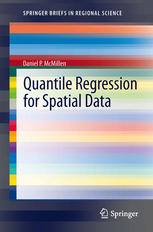

Most ebook files are in PDF format, so you can easily read them using various software such as Foxit Reader or directly on the Google Chrome browser.
Some ebook files are released by publishers in other formats such as .awz, .mobi, .epub, .fb2, etc. You may need to install specific software to read these formats on mobile/PC, such as Calibre.
Please read the tutorial at this link: https://ebookbell.com/faq
We offer FREE conversion to the popular formats you request; however, this may take some time. Therefore, right after payment, please email us, and we will try to provide the service as quickly as possible.
For some exceptional file formats or broken links (if any), please refrain from opening any disputes. Instead, email us first, and we will try to assist within a maximum of 6 hours.
EbookBell Team

5.0
80 reviewsQuantile regression analysis differs from more conventional regression models in its emphasis on distributions. Whereas standard regression procedures show how the expected value of the dependent variable responds to a change in an explanatory variable, quantile regressions imply predicted changes for the entire distribution of the dependent variable. Despite its advantages, quantile regression is still not commonly used in the analysis of spatial data. The objective of this book is to make quantile regression procedures more accessible for researchers working with spatial data sets. The emphasis is on interpretation of quantile regression results. A series of examples using both simulated and actual data sets shows how readily seemingly complex quantile regression results can be interpreted with sets of well-constructed graphs. Both parametric and nonparametric versions of spatial models are considered in detail.